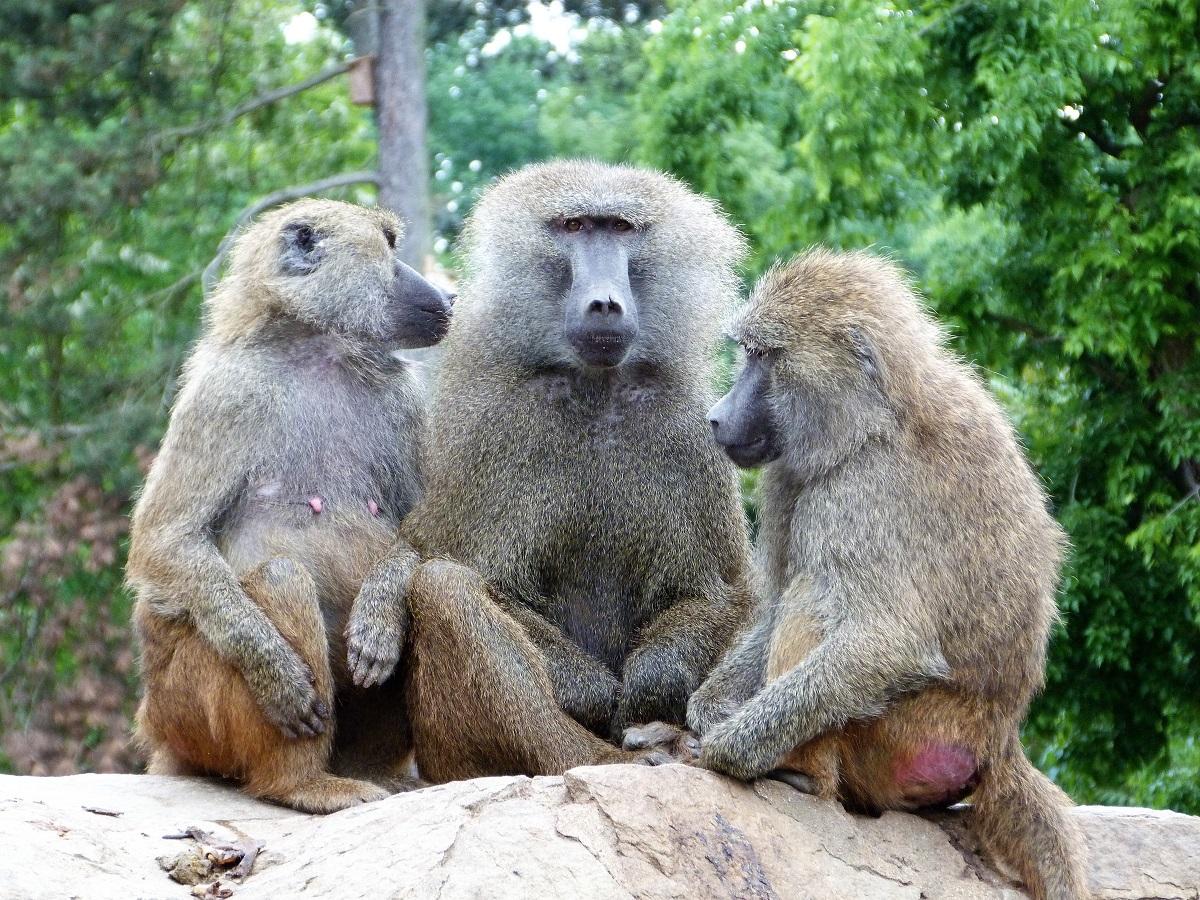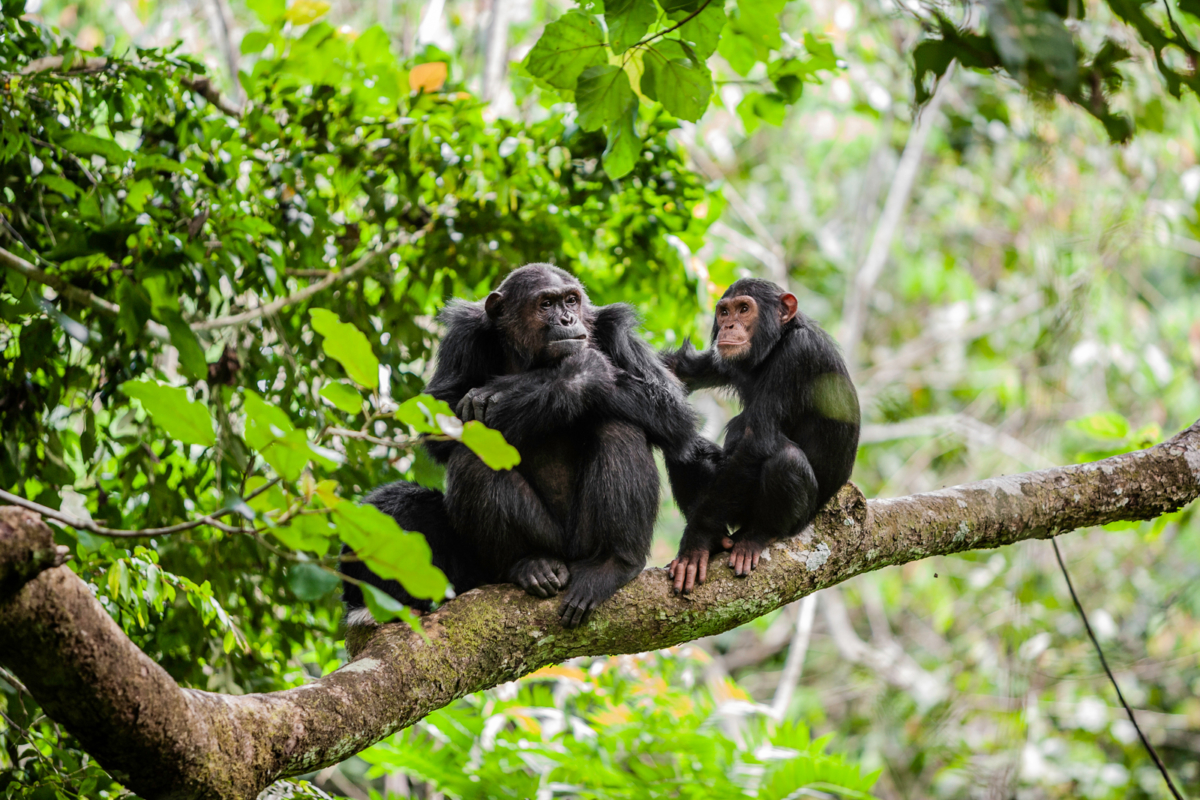- Adventure of a Lifetime
- +256 772 873106
- info@mtrwenzorisafaris.com

African Bush Elephants
October 14, 2022
The Buganda Kingdom
October 26, 2022Primates of Kibale Forest National Park
Kibale Forest National Park is located in Western Uganda, covering 795 square kilometers most of which is forested and ranges between 1,100meters(3,600ft) and 1,600 meters(5,200ft) in elevation. The national park protects the moist evergreen forest and contains an advanced array of the landscape. This is one of the last remaining expanses containing both lowland and montane forests.
It was gazette in 1932 and later in 1993 was established as a protected area and is managed by the Uganda Wildlife Authority(UWA). Kibale Forest National Park is also an eco-tourism and safari destination, known for its large population of habituated chimpanzees as well as other twelve primate species. It is most commonly referred to as the primate capital of the world with the richest ecosystem in Africa.
Kibale Primates
Kibale forest national park boasts 13 primate species and these are as follows.
Chimpanzees
Over 1,000 chimpanzees live in Kibale forest national park. This is one of the top tourist attractions in this rain forest and coming close to these primates is one of the unforgettable experiences one should not miss on their trip to the pearl of Africa. Chimpanzees are believed to share 98.7% of DNA with human beings and this makes them man’s closest relatives. They have also been recognized as one of the most intelligent animals because they adopt the use of different tools for example leaves to make nests as well as umbrellas.
Their close relationship with humans is seen through their laughter, walking posture, and hugs. Chimpanzees mostly inhabit the rain forests as well as the woodland savanna and that is the reason why Kibale forest national park has a dense population of these chimpanzees tourists should not miss seeing on their trip to the Pearl of Africa most probably to Kibale forest national park.
Black and White colobus monkeys (Colobus guereza)
These are closely related to the red colobus and are mainly known to forage on leaves, fruits, and flowers. Social groups of colobus are diverse and they vary from group to group. Black and white colobus are born with fur and a pin face, they grow a full black body and white beard, shoulders, and back hence the name Black and White colobus.
They are also known as the old monkeys of the genus colobus family living in Africa. They live in the riverine forest and wooded grasslands and usually move in groups of 8-9 individuals with a single male, females, and young ones. They are characterized by a black color with a white face and tail.
Red-tailed monkeys (Cercopithecus Ascanius) in Kibale Forest National Park
This is also known as the black cheeked white-nosed monkey. It can be found in other countries apart from Uganda for example Angola, Kenya, Rwanda, Tanzania, Cameroon, South Sudan, the Central African Republic, the Democratic Republic of Congo, and Zambia. The Red-tailed monkey can survive in all conditions and different habitats. It is a distinct creature in its habitats and is becoming endangered gradually due to deforestation and over-exploitation through predation and hunting.
Red-tailed monkey is characterized by a large cheek pounce large enough to keep more amounts of food and store it in their mouth for safety. In circumstances where the fruits are not enough, they survive on flowers, roots tree gum, and insects. Their body size ranges between the sexes and in most cases males are larger than females.

Red-tailed monkeys
Vervet monkeys (Chlorocebus pygerythrus) in Kibale Forest National Park
Vervet monkeys live in social groups ranging from 10-70 individuals with males moving to other groups at the time of sexual maturity. They are also believed to communicate with alarm calls in circumstances where they recognize a group or at the sight of predators. They are characterized by a black face and grey hair on the body with a length of about 40cmfor females to about 50cm for males.
Like other primates, vervet monkeys also groom each other by removing ticks and parasites from each other’s fur, and in most cases, it is the dominant male that takes the most grooming. You can see as many as you want when you visit Kibale forest national park in Uganda.
Olive Baboons (Papio Anubis)
The olive baboon is a member of the family Cercopithecidae old world monkeys and is the most wide-ranging of all baboons native to 25 countries in Africa. They are characterized by their coat color with a shade of green-grey at a distance. They also use a variety of communication methods that are both vocal and non-vocal which facilitate a complex social structure.
Olive baboons live in groups of 15-150 with fem males and many females together with their young ones, with each baboon having a social rank in the group depending on its dominance. Most females form their subgroups in the troop and are mostly friendly with each other.
At eight years of age, females are sexually mature and males at 7-10years that’s when they are mature sexually. During ovulation, the anogenital of the female swells and turns red-pink. This shows a sign that it is ready for mating. As you drive to Kibale forest national park, you get to meet so many of these olive baboons both on and on the side of the road.

Olive Baboons
L’hoest monkey (Allochrocebus lhoesti)
They mainly live in the North Eastern Democratic Republic of Congo(DRC), Rwanda, Burundi, and in Western Uganda they are found in Kibale forest national park.
L’hoest monkey mainly lives in mountainous forest areas and is characterized by a short dark brown coat with a chestnut color across the back and a dark belly. It also has light cheeks and a pale mustache. Males weigh about six kilograms while females are smaller and weigh about 3.5kilograms. L’hoest monkeys live in fairly small groups dominated by females with a single male.
They breed seasonally and the timing depends on the area. L’hoest monkeys are herbivorous and most of the time eat mushrooms, fruits, roots herbs, and leaves. They also eat lizards, small birds, and eggs. They prefer living in dense forests hence Kibale forest national park is a perfect destination for these primates.
Blue Monkeys (Cercopithecus mitis) in Kibale Forest National Park
This a species of the old world native monkey to Central and East Africa. It mostly lives in ever-green forests and bamboo in the forest canopy comes to the ground infrequently. It is characterized by a yellowish patch on the forehead, and dark blue color. Their size ranges from 50-65 centimeters in length with the tail longer than the rest of the animal females weigh 4kilograms while males weigh 8 kilograms. Blue monkeys mainly feed on fruits, figs, insects, flowers, and leaves though in some instances feed on slow invertebrates. They prefer to live high in the trees but they are mostly hunted by humans for bush meat, a threat to the remaining population. Blue monkeys live in social systems whereby females stay in their natural groups whereas males disperse when they reach adulthood. Females usually give birth after every two years and the gestation period is around five months. The blue monkey group sizes range from 10-40 with an adult male.
Grey cheeked Mangabey (Lophocebus albigena)
These are also commonly referred to as white-cheeked mangabey found in the forests of Central Africa as well. The grey-cheeked mangabey is characterized by thick brown fur with a slightly golden mane around the neck. It feeds on figs, fruits, insects, shoots, and flowers. They live in groups of 5-30 individuals and these groups have a single male who at a later stage leaves the group to join the other troops. Females stay in the troop of their birth but once the troops become large they end up splitting sometimes. Your visit to Kibale Forest National Park in Uganda will be worth it as you get to see as many as you can.
Uganda Mangabey (Lophocebus Uganda) in Kibale Forest National Park
This is a species of the old-world monkey found only in Uganda. It is smaller than the grey-cheeked mangabey and has a smaller skull. Apart from Kibale forest national park, it is also known to live in the forests of North and North Western Lake Victoria. It forages on leaves, fruits, and seeds.
Uganda Red colobus (Piliocolobus teprosceles)
This primate has been recognized as a distinct species since 2001. It is characterized by a rust-red cap with a dark grey black face but infants are usually born with a black face. Males are larger than females and they weigh arond10.5 kilograms while females weigh around 7kilograms. Its main diet is leaves. Grooming is carried out by most individuals because it is a social behavior.
They usually live in groups of 3-85 individuals though the size of the group is usually determined by the number of males present. Males are sexually mature at 5 years whereas for females it is between 4-5years. The gestation period is 5-6months with females having their first infant between 4 -5years.
Nocturnal primates of Kibale Forest National Park
Nocturnals are animals that are active during the night and sleep during the day. Examples include bats, bush babies, Pottos, and the patas monkey among others. Most nocturnals sleep during the day to avoid predators which are active during the day. Some stay away from the hot sunshine during the day.
Demidoff’s Galago (Galagoides Demidovii) in Kibale Forest National Park
These are also commonly known as bush babies and are native to parts of Central Africa and the tropical West. They also live in mangrove swamps, swampy forests, and mixed habitats. Their large eyes help them with their eyesight during the night. These primates can be seen during a night primate walk in Kibale forest national park.
Patas Monkey
This is found mostly in semi-arid areas of West Africa and East Africa. They are characterized by a soldier-like mustache and red fur.
Potto
This is another small nocturnal primate and grows to a length of 30-39cm with a short tail. They inhabit the rainforest canopy of tropical Africa from Nigeria, Guinea, Kenya, Uganda, and the North of the Democratic Republic of Congo (DRC). In Uganda, Potto can be seen in Kibale forest national park during a night primate walk.
Proposed Uganda Safaris Tour Packages
Chimpanzee Trekking Tour – 2 Days
3 Days Chimpanzee Trekking in Uganda
3 Days Murchison Falls Safari – Uganda












